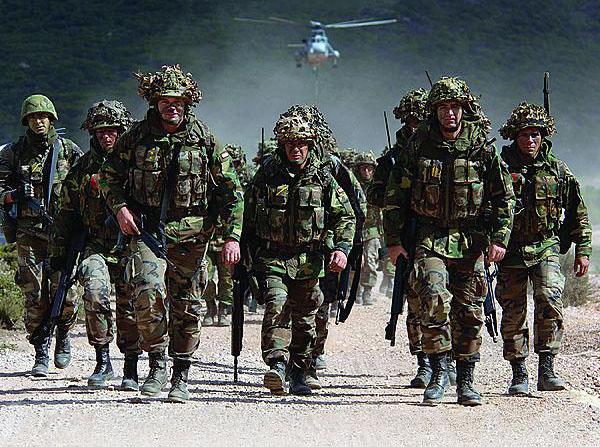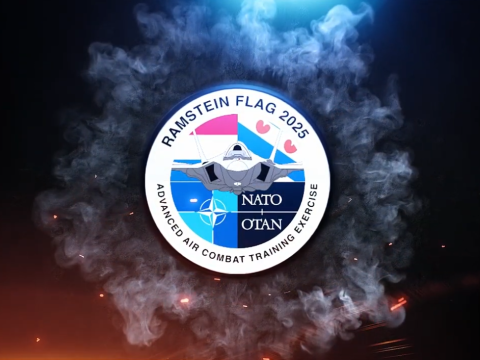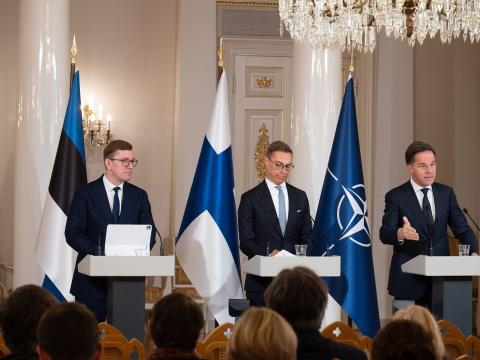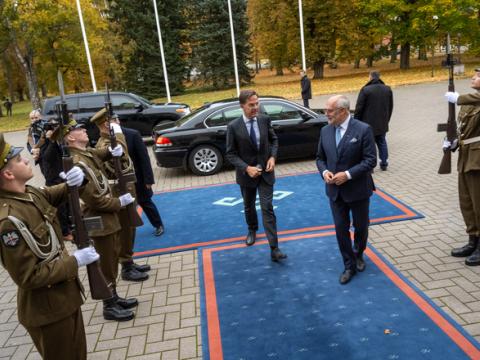NATO Priorities, Post Afghanistan
People, not technology, are still the greatest advantages or inhibitors in the world of military interoperability. For NATO, bringing together the right humans has enabled amazing advancements during the last five years, but it has also caused confrontations delaying momentum in certain cases.
Maj. Gen. Mels de Zeeuw, RNLAF, assistant chief of staff for the command and control, deployability and sustainability (C2DS) branch at NATO’s Supreme Allied Command Transformation (ACT), explains that his organization is working with the many groups within NATO to find and deploy the right resources in myriad fields. These include cyberdefense; command, control, communications, computers, intelligence, surveillance and reconnaissance; mission networks; counter-improvised explosive device (IED) efforts; and ballistic missile defense. The group does not build capabilities but focuses on defining them along with doctrine, organization, training, materiel, leadership and education, personnel and facilities. The general says this lack of developing materiel, and instead building requirements, is the most misunderstood facet of his branch.
Finding the right solutions can be tricky across an organization as diverse as NATO. Differing budgets and priorities demand robust answers. “We got lucky in that we have many high-quality experts walking around in our division,” Gen. de Zeeuw says. “In our good cases, we do have really what we call opinion leaders.” These people include representatives from almost 50 countries, different offices in NATO and industry. As they discuss challenges, they remain mindful that whatever humans offer, technology is still a major factor and changes much more rapidly. “It’s not very useful to think about how ... information and communication technology ... will look 20 years from now because developments are so fast it’s hard to predict what it will look like five years from now,” the general explains.
The officials are tasked with building consensus on how to move forward. He emphasizes, though, that, “It is indeed people where our focus should be.” Putting in place the right individuals and leadership is crucial and must be correct to make the best future for the organization
“There are of course huge opportunities, but there are huge challenges also,” Gen. de Zeeuw says. Humans make up one situation that falls into both those categories—duty assignments. The command would like personnel sent for four-year terms, not three years, to really take advantage of expertise and learning. But convincing the countries to agree is not always a simple task. However, the rotation of military members means that up-to-date familiarity with current operations is resident throughout the building. “It is a challenge to educate anyone, but there is the benefit of having the fresh operational view,” the general shares.
Another challenge and opportunity is the quick pace of developments. The next networks, for example, are rolling out now. Between the time of interview and publication, Gen. de Zeeuw and his team planned to propose to NATO’s Military Committee that the name Future Mission Network should change to Federated Mission Network, because it is no longer a technology to come. It affects how troops operate and share information. “That’s very important,” he says.
Also high on the minds of personnel in the C2DS is the drive toward efficiency, especially information technology modernization. The centralization of the information and communication technology infrastructure of NATO is one such push that has become concentrated over the past couple of years. “A big change right now is the impact of the financial crisis around the world and in the nations,” Gen. de Zeeuw explains. “That is pressuring us into a lot more creativity” with modest budgets. Decision makers are trying to make the best use of the best ideas to develop smart solutions.
The general calls the Alliance Ground Surveillance, or AGS, program an example of that approach. The system will give commanders a comprehensive picture of the situation on the ground. Both the acquisition process and the employment process will be a united effort among countries. Extra emphasis is being placed on better cooperation, which Gen. de Zeeuw calls a big change. Despite this, resourcing a suite of requirements with general agreement across 28 nations takes quite a bit of his office’s time and resources. Finesse is a necessary piece of the work done across NATO, because what is done through the organization is largely dependent on the cooperation of the countries.
Michael Rowland, director of staff, C2DS, has been at Supreme ACT headquarters longer than Gen. de Zeeuw, giving him a perspective over several years. He says that during the last five years the switch to multinational solutions as well as pooling and sharing resources has become much more important. Nations are becoming more willing to put aside various issues in the hope that a joint approach will yield better results than individual pursuits.
Looking ahead, Gen. de Zeeuw says the biggest change in the next five years will be the move from an operational to a contingency to a readiness force post-International Security Assistance Force (ISAF). The lessons learned that leaders now must apply not only pertain to operations and logistics, but also to fields such as medicine. The focus will move to exercising together in ways that build the force as dictated by lessons learned in Afghanistan. A large part of this will be interoperability and how to achieve that among the many partner nations. With roughly 50 nations working together on various efforts, it will be important in coming years to connect within and without of NATO and to share new information among the stakeholders.
As with everything else, the technical side plays a role, mainly in the ability to connect. But finding common languages, behaviors, doctrine and procedure will be even more important. Challenges for these exercises include how to move thousands of people to the training locations. Here, technology can make a difference in helping to allow distance participation.
Another role of technology in the future is social media. Twitter continues to factor more prevalently in communications during volatile events in many countries and could influence military operations. The general says NATO has to go back to the drawing board to understand how social media will affect missions. “Five years ago we didn’t have that,” he states. “Five years from now I’m pretty sure we will have to take that into account.”
Big data is another trend reshaping operations. Personnel still need to find ways to sift through exorbitant amounts of data in an intelligent way so they can make use of it. The general says he is confident good solutions are coming up for post-ISAF NATO. But they could be very different from past approaches.
The C2DS and NATO overall have marked cyberdefense a priority as well. At conferences, leaders discuss the large potential consequences of a cyber attack that could impact physical infrastructure, energy and banking systems. Gen. de Zeeuw says the alliance is working within itself so members can defend themselves and each other. The organization has capabilities in place wherein if a country has a significant problem it can reach out through a platform in the Brussels NATO headquarters and the ACT headquarters in Norfolk, Virginia, to bring together partner nations to see who can help. “So this sharing of information will be the very important thing in the years to come to defend ourselves and the 28 nations better,” the general says. The overall aim is to protect NATO and its own infrastructure.
Cyber has unique challenges when compared to other domains, and governance of cyberdefense varies in each nation. “It’s a challenge then to organize ... but with the challenge coming up we have to develop solutions. ...It’s totally different from sea, land and air,” Gen. de Zeeuw explains.
To handle the many opportunities and issues facing the future NATO, decision makers there seek to share with industry as well. Because the C2DS does not build, but rather identifies, solutions, private-sector involvement can play a large role in future success. This month, NATO will hold a forum with industry in Brussels to carry out high-quality engagement.
Both the C2DS division and the larger alliance want to increase current achievements moving into the future. “I don’t think anywhere in the world there’s an organization as successful as NATO,” Gen. de Zeeuw says. “As operations are winding down, we should build on past successes and be ready for future challenges.” He encourages organization stakeholders to have an open mind to learn about looming obstacles and how to put in place the right training and forces to handle them. They also have to be able to foster adaptability to counter threats.
Gen. de Zeeuw says he can tell the same story over and over, with different emphases. In the end, working and plans come down to putting together the right personnel to create and deploy the right resources over the next few years, whether for cyberdefense or counter-IED or any other challenge. Staying realistic about technology will help, too. With the rapid rate of change, the general plans to emphasize evolving correctly over the next two to three years without focusing on 10 to 15 years out.





Comments